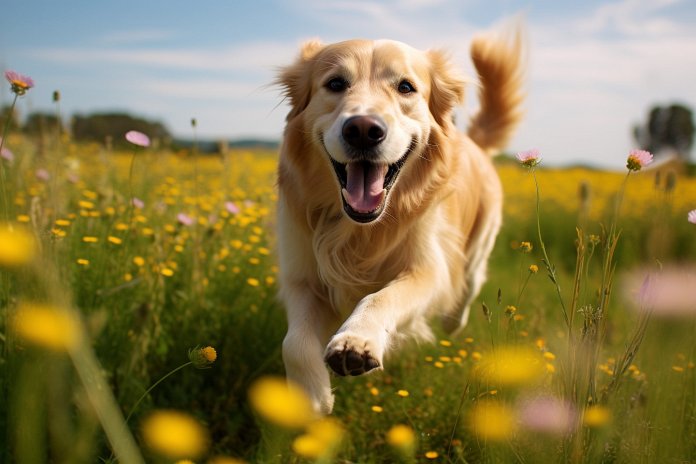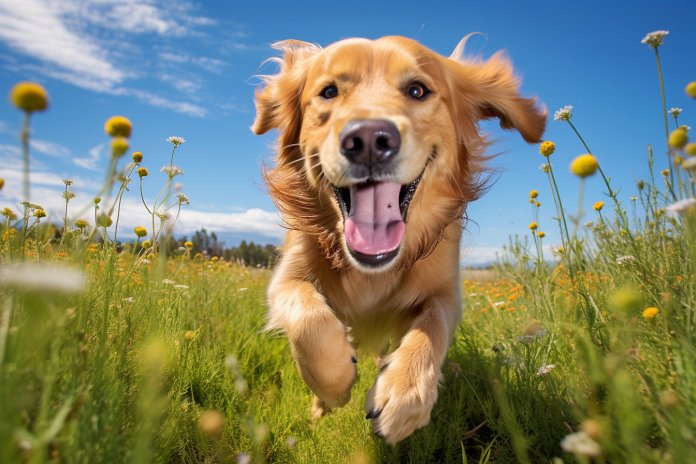
Dogs are incredible animals with amazing abilities to use their senses and help their human companions. But how do dogs know how to respond to new things? Can they remember specific events? In this article, we will explore how a dog’s memory works and how they can remember certain situations.
Signs that a Dog is Remembering
Dogs have different ways of showing that they remember certain things. For example, they might react similarly each time you pick up their leash, indicating that they remember what a leash means. Dogs make memories by associating specific things with previous experiences, such as getting excited and barking when they smell the familiar scent of the park or knowing it’s time to go outside when they see you put on your slippers. Dogs use all their senses to make these associations and predict specific events.
Body Language
There are several signs you might notice when your dog is remembering something, including being alert, barking, panting, jumping up, and wagging their tail. Other signs include trying to get your attention, moving in the direction of the stimulus, and perking up and looking around.
The History of Dogs’ Memory
Dogs have evolved their memory over thousands of years to better connect with humans. This process began when humans domesticated wolves over 15,000 years ago. Wolves noticed that humans were tossing leftover food, and they got closer to these communities by learning to predict human needs. They associated specific smells, facial expressions, tones of voice, and other cues with events. Over time, wolves evolved into the dogs we know today, with different breeds and personalities, but all dogs have evolved to remember specific things.
The Science of Dogs’ Memory
Studies have shown that dogs have an associative memory, meaning they associate specific things with specific events. While dogs may not have the same episodic memory as humans, some dogs can copy their owner’s actions simply by hearing the command. Dogs use their associative memory to prepare for what might happen next.
Training a Dog to Remember
To train a dog to remember specific things, expose them to different experiences to gather information about the world. Reward positive behavior in new environments or social situations, and associate stimuli with positive events, such as mail carriers with treats to reduce barking. Dogs take in a lot of information, which helps them remember how to behave and predict future events. Positive reinforcement and rewards are more effective than punishment in training dogs.
Conclusion
Dogs have remarkable memory abilities, although different from humans. They make associations with specific things and respond based on their previous experiences. By understanding how dogs remember and using positive reinforcement in training, we can strengthen our bond with these amazing animals.
Dogs use associative memory to predict specific events and respond accordingly.

Tips & Things to Know
1️⃣ Dogs have a unique memory that works through associations. They remember specific things by linking them to previous experiences and responding accordingly. For example, they may get excited when they smell a familiar scent or hear a specific sound.
2️⃣ Dogs show signs of remembering something through their body language. Some signs include alertness, barking, panting, jumping up, and wagging their tail. They may also try to get your attention, move towards the stimulus, or perk up and look around.
3️⃣ To train your dog to remember specific things, expose them to different experiences and environments. Reward positive behavior and associate new stimuli with positive experiences. By creating positive associations, your dog is more likely to remember and respond appropriately.
Frequently Asked Questions, Answered ✅
1. How do dogs make memories and remember specific events?
– Dogs make memories by associating specific things with specific events and respond to them based on their previous experiences.
2. What are the signs that a dog is remembering something?
– Signs that a dog is remembering something include alertness, barking, panting, jumping up, and wagging tail.
3. How has the memory of dogs evolved over time?
– Dogs have evolved to better predict the needs of their humans by strengthening their ability to associate specific smells, facial expressions, tones of voice, and other cues with events.
4. How does a dog’s memory differ from human memory?
– Dogs have an associative memory, meaning they associate specific things with specific events, unlike humans who have episodic memory.
5. How can you train a dog to remember specific things?
– Exposing a dog to different experiences and rewarding positive behavior can help train a dog to remember specific things. Positive reinforcement and associating stimuli with positive events can also be effective in training a dog’s memory.